1. Dual-Core Processors Become the Norm in Smartphones
In 2011, the Motorola Atrix and the Droid Bionic were the first commercially popular smartphones to sport dual-core processors. In the fall, Apple’s iPhone 4S followed suit--and now it seems unlikely that any smartphones unveiled in 2012 will be competitive unless they can offer the same processing power that Apple’s phones do.
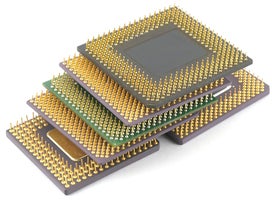 As a result, you should expect to see a surge in dual-core mobile devices. ARM executive James Bruce, whose company licenses the designs of chips that find their way into almost every mobile device in the world, said in a May interview that dual-core processors would be a huge part of making smartphones not just powerful but also battery-efficient.
As a result, you should expect to see a surge in dual-core mobile devices. ARM executive James Bruce, whose company licenses the designs of chips that find their way into almost every mobile device in the world, said in a May interview that dual-core processors would be a huge part of making smartphones not just powerful but also battery-efficient.“If you look at handsets today, we’ve seen dual-core handsets reduce power consumption,” he says. For example, if you're sending a text message, dual-cores have the potential to effectively streamline the lower-power functions of the phone through one core, while reserving the other core for more power-intensive functions, like gaming or navigation."
And don’t expect chip development to stop at two cores. In December, Nvidia announced its first quad-core processor for tablets and smartphones, the Tegra 3.
2. Optical-Disc Drives Disappear From New Laptops
If you could download a movie in 2 minutes at any airport or coffee shop, or access hundreds of family photos from any network connection, how often would you use your laptop’s optical drive? For most people, the answer is "not often."
 That’s why, in 2012, you’ll see fewer laptops with optical drives. And the superlight classes (such as MacBook Airs and Ultrabooks) won't be the only ones abandoning them--larger-screened portables will, as well.
That’s why, in 2012, you’ll see fewer laptops with optical drives. And the superlight classes (such as MacBook Airs and Ultrabooks) won't be the only ones abandoning them--larger-screened portables will, as well.Ali Sadri, president of the Wireless Gigabit Alliance, which is working to propagate 7-gbps wireless on the 60GHz band of the spectrum, says that faster wireless will certainly change the way that laptops look, for good. “Multi-gigabit connectivity gives us all sorts of uses. Suddenly you don't need to have all these bulky devices. A very light laptop doesn't have room for an HDMI cable port, or a docking station.”
In 2012, regular-size laptops will be able to ditch their disc drives--and even many of their ports--without losing too much functionality. MacBook Airs don’t include optical drives, and larger MacBooks will likely follow suit this year. Laptops from other manufacturers, such as Asus, Dell, and Toshiba, will join the trend. Of course, some laptops will retain drives, but in 2012 new laptops with optical-disc drives will become harder to find.
3. Data-Only and Reduced-Voice Cell Phone Plans Proliferate
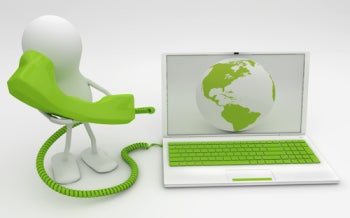 You probably spend way more time sending email and checking Facebook updates than you do making calls on your cell phone these days. And cell phone carriers are taking notice. In 2012, when you’re shopping for a phone plan, you’ll see data plans emphasized and calling minutes marginalized. Already, T-Mobile and Walmart have partnered to create a prepaid plan that offers 5GB of data and a measly 100 voice-calling minutes for just $30 a month.
You probably spend way more time sending email and checking Facebook updates than you do making calls on your cell phone these days. And cell phone carriers are taking notice. In 2012, when you’re shopping for a phone plan, you’ll see data plans emphasized and calling minutes marginalized. Already, T-Mobile and Walmart have partnered to create a prepaid plan that offers 5GB of data and a measly 100 voice-calling minutes for just $30 a month.PCWorld Associate Editor Patrick Miller tested the plan, doing most of his calling via VoIP on Skype’s app. Although his calls sometimes suffered from lag or occasionally cut out, ultimately the voice quality and reliability of his VoIP calls were no worse than on calls he made through a traditional cellular voice plan.
And new carrier Republic Wireless announced a plan that charges just $19 a month for unlimited data, text, and calling. The plan assumes that you’ll spend most of your time using Wi-Fi networks in your home, office, or around town, but provides cellular access for those occasions when you’re not around a hotspot. Use the cellular service too much, and you get kicked out of the Republic Wireless plan.
4. Facebook Accounts Become Necessary to Do More Stuff on the Web
Want a Spotify account? You’ll need to get a Facebook account first. When Facebook announced its partnership with Spotify in September 2011, the big objection that most people had to the partnership was that everyone could see what songs you were listening to, no matter how embarrassing your musical choices were.
Since then, Facebook and Spotify have decided to allow you to make your sharing private. (Or, for some people, secret. There’s a difference.) But one thing that Facebook and Spotify have not backed down on is the requirement that all new Spotify users sign in with Facebook before they can access any free tunes.
Turntable.fm is another new music-sharing service that requires the user to log in with a Facebook account--do so, or take a hike. While many websites aren’t quite so stringent with their login demands, it’s becoming more and more common to see “Sign in with your Twitter or Facebook account!” in big letters across a website’s login area. Only in the small print can you find the option to make an account without linking to your social media pages.
In 2012, it’s safe to assume that you’ll see more of this. The setup is good for small sites--they can largely weed out fake accounts and abusive users with the filter of a Facebook login, all while making sure that genuine customers don’t forget their login information. And the arrangement is good for Facebook--it can keep track of the sites that users visit, and encourage them to share more thoroughly (which is better for Facebook’s ad sales).
5. NFC Facilitates Mobile Payments, Peer-to-Peer Networking
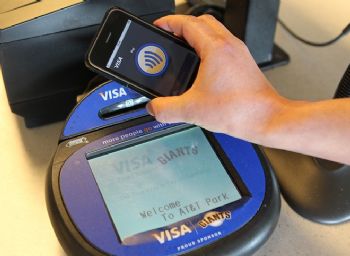 Imagine tapping your phone to a receiver at a register, and instantly paying for an item without fumbling for your wallet. Or getting into a movie theater with a similar tap of your phone. Or being able to load your transit card onto your phone, using a simple tap to deduct money for every trip on the subway.
Imagine tapping your phone to a receiver at a register, and instantly paying for an item without fumbling for your wallet. Or getting into a movie theater with a similar tap of your phone. Or being able to load your transit card onto your phone, using a simple tap to deduct money for every trip on the subway.All of that is already possible with the help of near-field communication chips, which transfer small amounts of data through a short-range, low-friction connection.
Currently, you can buy the Google Nexus S phone, which carries an NFC chip and the Google Wallet companion app for syncing your credit cards to your phone and making mobile payments at participating vendors. Meanwhile, RIM is baking NFC chips into newer phones such as the BlackBerry 9900, and recently it introduced Tag, a RIM-specific feature that allows BlackBerry users to transfer contact information and documents.
The latest version of Android, Ice Cream Sandwich, is built to let app developers take advantage of the many uses for NFC, such as setting up peer-to peer connections between phones simply by tapping the phones' backs to each other. So without a doubt, in 2012 you’ll see more phones with these chips built into them, as well as more apps that employ the technology.
6. Processing Enters the Cloud
Makers of devices such as smartphones, tablets, and even cameras are pushing the boundaries of mobile computing by thinking outside of the chip. In 2012, “cloud processing,” or the ability to process complex information on remote servers, will make considerable advances.
A year before Siri debuted, Google Goggles did the same thing: You could snap a picture of a book, a logo, or a notable landmark, for instance, and Goggles would analyze the image at one of its Google server centers and return a search page relevant to the image. So apps that take advantage of cloud processing already exist--but you should expect to see a slew of voice recognition and face/object recognition apps appear for mobile devices in 2012. (A Google exec recently revealed that the company is working on a Siri competitor, called Majel.)
7. HTML 5 Takes the Stage
Markup languages rarely make headlines, but the HTML 5 upgrade will change the Internet in 2012 more than any cool new website will. That's because it’s the foundation that all cool new websites will be built upon. By bringing XHTML under the same umbrella as HTML, and by allowing Web programmers to use brand-new video and audio commands to integrate media into sites more gracefully, HTML 5 will become the key tool for making sites act a lot more like native apps on your phone.
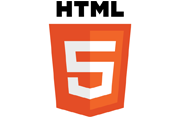 And in some cases, HTML 5 websites might even replace apps. All the major mobile operating systems have adopted the new Web standard. HTML 5 promises to make it easier and more affordable for developers to introduce interactivity in browsers because they no longer need to buy and install proprietary plug-ins to create click-responsive graphics or to embed video.
And in some cases, HTML 5 websites might even replace apps. All the major mobile operating systems have adopted the new Web standard. HTML 5 promises to make it easier and more affordable for developers to introduce interactivity in browsers because they no longer need to buy and install proprietary plug-ins to create click-responsive graphics or to embed video.Facebook is one of the major companies that have committed considerable resources to developing their sites for HTML 5. Pandora redesigned its site with HTML 5, too. Then, in November, Adobe announced that it would no longer continue to develop its mobile Flash Player because HTML 5 has been so much better received than its Flash plug-in.
Watch for redesigned sites in 2012, and be prepared to see companies forgo building new apps in favor of creating a unified HTML 5-based site. There’s even an Occupy Flash movement intended to encourage developers to stop using Flash and start using HTML 5.
8. IPv6 Starts Rolling Out
To send and receive data on the Internet, every connected device needs an IP address--and 2011 was the year we finally started running out of IPv4's unique, 32-bit sequences.
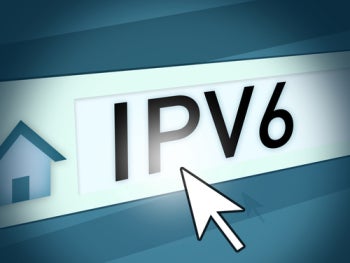 For the time being, Internet service providers can assign groups of devices a single IP address using network address translation, or NAT, to break down where traffic should travel among the group of devices. We can’t use NAT forever, but for the average consumer, that won’t be a concern for quite a long time.
For the time being, Internet service providers can assign groups of devices a single IP address using network address translation, or NAT, to break down where traffic should travel among the group of devices. We can’t use NAT forever, but for the average consumer, that won’t be a concern for quite a long time.In 2012, however, the issue will affect websites that are hosting their content on IPv4-only servers, and smart businesses will want to get an IPv6 address in addition to an IPv4 address so that when the transition to IPv6 does come, they’ll be prepared. IPv6 isn’t backward-compatible with IPv4, but companies can “dual stack” their servers to offer content on both “versions of the Internet.”
It will be important for companies to keep their IPv4 addresses for some time, as households might not be equipped for IPv6 (increasingly, however, routers and device operating systems are offering support for both versions). When the time comes for websites to relinquish their old IPv4 addresses, many average consumer devices will be ready.
9. Consumers Borrow More Books, Movies, and Music
The Internet has done wonders for media sharing, and in 2012 it will become easier than ever to borrow media rather than buy it. Spotify and Rdio already let you listen to the music of your choice for free, and Google announced in November that its music-storing service will permit users to share songs with their friends.
E-readers such as the Amazon Kindle and the Sony Reader Wi-Fi PRS-T1 let you rent ebooks from public libraries. And you'll find no shortage of movie streaming services that let you watch flicks at a moment’s notice without filling up your hard drive with downloaded copies.
Devices that help you consume multimedia are boosting the trend. Amazon’s Kindle Fire, for instance, ships with only 8GB of storage, less than an entry-level iPhone 4S. That means Fire users will likely be streaming movies rather than downloading them, and listening to music from Rdio rather than keeping thousands of tunes on their tablets.
And Barnes & Noble’s Nook Tablet is hardly more than an e-reader with media-streaming capabilities, as only 1GB of its storage is available to hold non-Barnes & Noble downloads.
10. Fewer (but Better) Tablets Arrive
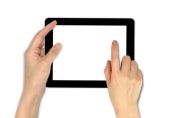 Clearly, tech companies want to sell tablets. In 2011, however, no tablet could truly compete with the iPad. From the genuinely disappointing (Fusion Garage’s Grid 10 tablet, based on a proprietary version of Android called GridOS) to the mildly dissatisfying (the Kindle Fire), there’s clearly a market for tablets, but someone other than Apple has yet to get it right.
Clearly, tech companies want to sell tablets. In 2011, however, no tablet could truly compete with the iPad. From the genuinely disappointing (Fusion Garage’s Grid 10 tablet, based on a proprietary version of Android called GridOS) to the mildly dissatisfying (the Kindle Fire), there’s clearly a market for tablets, but someone other than Apple has yet to get it right.In 2012, you'll almost certainly see some tablet makers dropping out of the game, but the ones that stick around will finally start to understand what tablet consumers want: not a big phone, but a media consumption and creation device that can stand up to heavy use.
New tablets will use the Android Ice Cream Sandwich OS, the tablet-optimized Windows 8, or the new RIM PlayBook 2.0 operating system. Let’s hope that 2011 was the warm-up, and that 2012 will be the year you’ll see real competitors to the iPad.
Source 'http://www.pcworld.com/article/246491/tech_trends_youll_see_in_2012.html'
www.timdatarecovery.com
info@takingitmobile.com
1-888-CALL-TIM
No comments:
Post a Comment
Note: Only a member of this blog may post a comment.